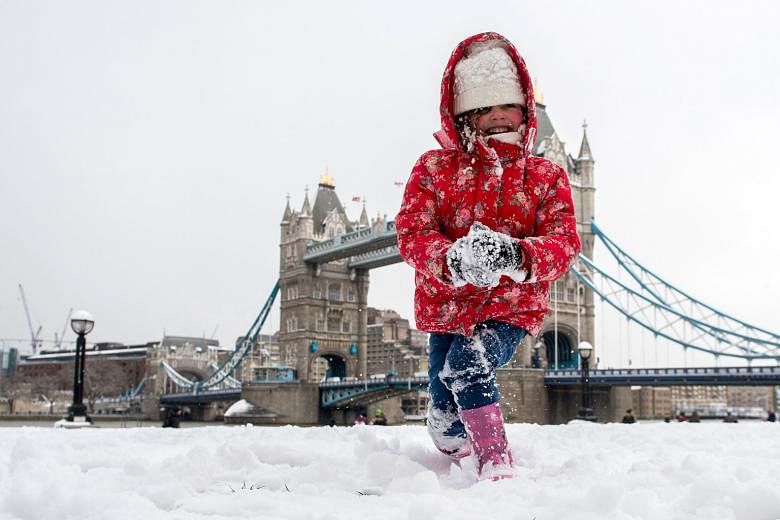Right now, it is colder in parts of England than the North Pole due to a freakish weather event that is alarming scientists.
In recent days, temperatures have soared in the Arctic, while the normally freezing weather has shifted south and is now blasting parts of Europe.
On the northern tip of Greenland, the Cape Morris Jesup meteorological site has had a record-smashing 61 hours of temperatures above freezing so far in 2018, as sea ice in the Arctic continues to retreat.
"It's never been this extreme," Reuters quoted Dr Ruth Mottram, a climate scientist at the Danish Meteorological Institute (DMI), as saying.
Warmth was coming into the Arctic, both up from the Atlantic and through the Bering Strait, driving cold air south.
Around the entire Arctic region, temperatures are now about 20 deg C above normal, at minus 8 deg C, according to DMI calculations.
At this time of the year, there is no sunlight in the Arctic and sea ice is at its largest extent.
But scientists are deeply worried about the pace of change in the Arctic, where temperatures are rising twice as fast as anywhere else on the planet and the sea ice area is shrinking.
Bursts of heat have been occurring more frequently in the far north during winter and there are fears that climate change could be disrupting normal weather patterns in ways not fully understood.
In 1973, a study suggested that an ice-free Arctic Ocean could make regions farther south colder.
That "warm Arctic, cold continent" (WAC#C) pattern is sometimes dubbed "wacc-y" or "wacky" among climate scientists, Reuters said.
"Wacky weather continues with scary strength and persistence," tweeted Professor Lars Kaleschke from the University of Hamburg.
"The question is whether this weather will happen more often," he told Reuters.
Arctic Ocean sea ice is at a record low for late February, at 14.1 million sq km, according to the United States' National Snow and Ice Data Centre. That is about one million sq km less than normal, or roughly the size of Egypt.
Scientists say a long-term shrinking of sea ice on the Arctic Ocean, linked to global warming, exposes warmer water below that releases more heat into the atmosphere. That in turn may be disrupting the high-altitude jet stream.
"The jet stream becomes wavier, meaning that colder air can penetrate farther south and warmer air farther north," Dr Nalan Koc, research director of the Norwegian Polar Institute, told Reuters.
Some climate scientists say the polar heatwave and disruption of the polar vortex are a warning.
"This is an anomaly among anomalies. It is far enough outside the historical range that it is worrying - there are further surprises in store as we continue to poke the angry beast that is our climate," said Dr Michael Mann, director of the Earth System Science Centre at Pennsylvania State University.
"The Arctic has always been regarded as a bellwether because of the vicious circle that amplifies human-caused warming in that particular region. And it is sending out a clear warning," The Guardian quoted him as saying.


